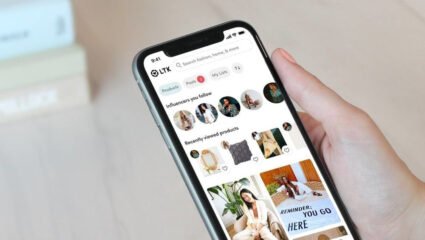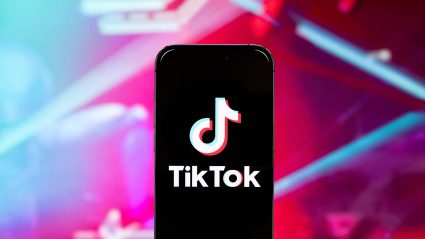Every social media marketer knows that working with influencers can be a blessing and a curse. Because online creators have powerful pre-existing relationships with consumers, partnerships with them can help you establish a deeper, more authentic connection with your target audience; but those same relationships mean they can also risk missing the mark completely or even offending potential customers.
That’s why it’s crucial to have a robust vetting process in place to help you find the right influencers to get the most out of your partnerships and avoid costly missteps.
Hard data: asking the quantitative questions
When searching for influencer partners, start by making sure your team has a good grasp on the brand personas and business objectives you’re aiming to reach with this partnership.
By putting in that strategic work during the vetting process, your team will be prepared to choose partners with the right content, audience, and reach to help your brand tap into connections that can help you hit your goals.
Once that foundation is in place, you can start looking for creators with audiences that align with your goals. While it’s important to choose partners who make content that fits with your brand’s messaging and who look and feel like your identified target persona, a creator’s following is just as important.
After all, the reason you’re working with influencers in the first place is to take advantage of their connection with consumers. When reviewing a creator’s audience, your team should consider the following:
- Where is that audience located?
- How old are they?
- What type of content are they interested in?
You can get more quantitative information by partnering with SAS or proprietary platform marketplaces like CreatorIQ, YouTube’s BrandConnect, or TikTok’s Creator Marketplace to access data like engagement or audience demographics so you’re not just taking your best guess at an influencer’s audience makeup.
You should dive deep into the audience’s location so you’re not partnering with someone whose followers can’t purchase your product or service.
For example, if your product is only sold in the US and just 40% of the influencer’s followers are in the country, reaching that group may not be the best use of your budget. For American brands, a US audience under 50% can also be an indicator of bot followers.
Audience size is also an important factor. While you always want to reach more people, when it comes to online followings, bigger isn’t always better. It can be tempting to go after the Alix Earles or MrBeasts of the online world, but you’ll often get more bang for your buck with less major players.
Be realistic with your budget and your expectations from the beginning so that your time and effort vetting potential creators doesn’t go to waste on people who don’t fit your needs. Smaller influencers can still be hugely impactful for a lower price, especially if their followers are very engaged.
@alixearle Which color/flavor is your favorite!? @Olehenriksen #poutpreserve #Olepartner ♬ original sound – Alix Earle
If you love an influencer’s content but their audience or engagement rate isn’t what you’d like it to be, that doesn’t mean you have to count them out entirely. Instead of a traditional partnership where they’re creating content for your brand on their page, you may want to consider working with them on a content creation-only basis.
Soft data: keeping things contextual
While hard data can be identified via a platform, “soft data” (also known as qualitative data) requires a human touch. By combining these qualitative insights with quantitative data on audience demographics and engagement, you can get the full picture of an influencer’s profile and what collaborating with them can do for your brand.
A good place to start with soft data is by looking for profiles with content in a niche that fits your product or service. Niche-specific content creators are a great bet for brands because their audience is guaranteed to be interested in a specific topic related to your product, making them more likely to be receptive to your partnership. Since that creator is focused on your industry, you also have the chance to go back to them for new launches or make them a brand ambassador.
Examples of niches you can look into are parenting, lifestyle, fashion, finance, tech, wellness and beauty, fitness, and food. When exploring these online communities, take into account what platform they’re on, as some topics have a particularly strong presence on certain platforms (e.g. BookTok on TikTok or Travel on Instagram).
@meagan.carioti my 5 star reads 🫶🏻 #booktok #topreads #fivestarreads #favoritebooks #romancebooks #fantasyromancebooks #romantasybooks #romancereader #bookrecommendations ♬ original sound – Alicia|Reader|Reviewer|Tired
If you’re trying to reach a broader audience or don’t want your brand to be shoe-horned into a particular space, you can also work with creators in unrelated fields. One great way to do this is by capitalizing on particular moments in potential partners’ lives that might connect to your brand.
Look for creators with relevant followings who might be experiencing certain milestones that you could leverage to your brand’s advantage. Did they get a new dog? Were they recently engaged? Are they pregnant? Is a new home on the horizon?
When considering these questions, you should also think about whether this is the kind of content you want to have associated with your brand.
The car-sharing company Avail used this strategy to form an effective partnership with former Bachelor contestant Anna Redman. They saw that Anna needed access to a vehicle to do everything from daily activities to short weekend trips, but didn’t want to commit to car ownership since she was living in downtown Chicago. Although Anna’s content wasn’t usually car-related, this was a perfect opportunity for Avail to show Anna’s audience how they could use their service in a similar situation.
View this post on Instagram
Final review: ensuring quality content
Before committing to a partner, it’s crucial to carefully review the quality and style of their content. You need to look at both sponsored and non-sponsored posts to see not only their general profile but also if they’ve partnered with any of your competitors in the past or if they’re more likely to do one-off partnerships versus becoming an ambassador for brands.
You should also take a look at the way the creator engages with their audience. Do they interact with their followers in a way that seems genuine and is a reflection of who they are as a person? Or do they ignore comments and keep their followers at arm’s length?
You’ll need to take these factors into account when determining the kind of relationship you want to have with both the creator and their audience. You should also be wary of bot activity within an influencer’s following; fake accounts are a major issue and could negatively impact your campaign’s outcomes.
Finally, before any contracts are signed, you need to check your potential partner’s background. Have they been embroiled in any scandals, particularly ones to do with racism, sexism, homophobia, transphobia, or acts of assault or harassment? Do they often talk about controversial topics that might not fit with your brand’s values or mission?
The last thing you want to do is partner with someone who could be bad news for your brand, so make sure anyone you’re reviewing is brand-safe before making moves to work with them.
By taking the time to consider both statistical and contextual factors in the vetting process, your team can choose the best influencers to help you make the most of your budget and reach your target audience where they’re already engaging online.








Responses